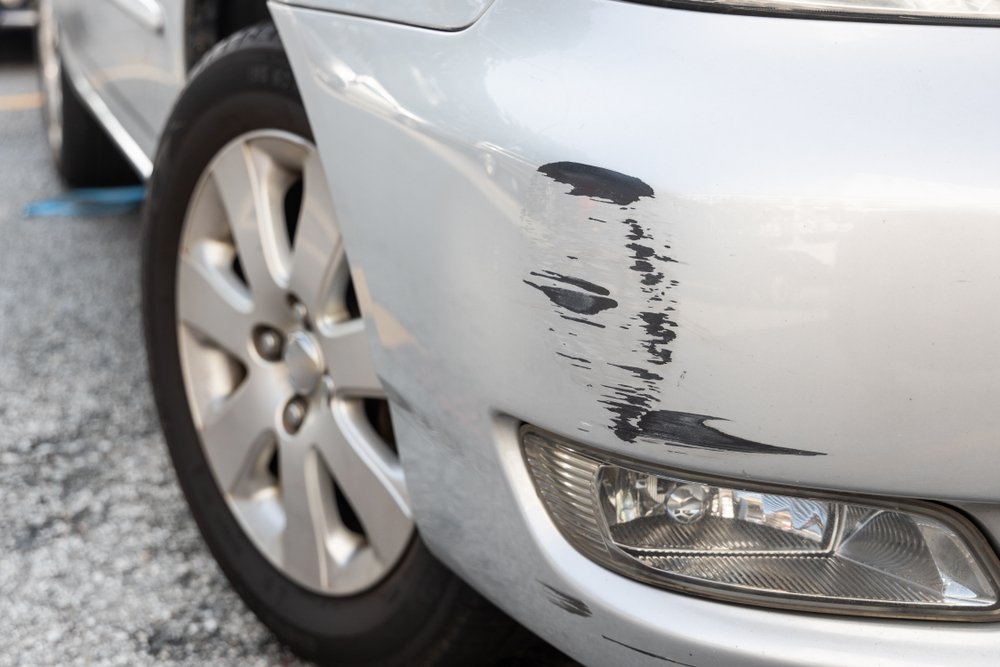ARS 28-662 is the Arizona statute that defines the crime of misdemeanor hit and run. People commit this offense if they get into a car accident that causes damage to another vehicle and then fail to stop at the scene of the accident. A violation of the law is a Class 2 misdemeanor punishable by up to four months in jail time. This crime is also referred to as “misdemeanor leaving the scene of an accident.”
Note that ARS 28-661 is the Arizona law on felony hit and run. This statute says it is a felony offense for a person to fail to stop after an accident if it causes physical injury or death to another person. However, the offense is only a misdemeanor when the accident only causes property damage, but no injuries.
The language of ARS 28-662 states that: “The driver of a vehicle involved in an accident resulting only in damage to a vehicle that is driven or attended by a person shall…immediately stop the vehicle at the scene of the accident or as close to the accident scene as possible but shall immediately return to the accident scene.”
Examples
- crashing into a parked car and leaving the accident scene.
- getting into a fender bender with another motorist and speeding off.
- hitting a bicyclist and not stopping the car.
Defenses
Defendants have the right to challenge hit and run charges with a legal defense. A few common defenses include accused people showing that:
- an accident did not involve vehicle damage,
- the police arrested the wrong person, and
- they acted out of necessity.
Penalties
Violations of ARS 28-662 are charged under Arizona law as Class 2 misdemeanors. The penalty for simple hit and run is:
- up to four months in jail, and/or
- a maximum fine of $750.
In this article, our Phoenix Arizona criminal defense attorneys will discuss what the law is under this statute, defenses available if charged, the penalties for a conviction, and related crimes.

ARS 28-662 makes it a crime of misdemeanor hit and run to get into a car accident that causes damage to another vehicle and fail to stop at the scene of the accident.
1. How does Arizona law define “misdemeanor hit and run”?
People commit the crime of misdemeanor hit and run cases if they:
- get involved in a car accident that causes damage to a vehicle, and
- knowingly fail to stop or remain at the accident scene.1
Arizona law says that drivers have a duty to give information and assistance after a motor vehicle accident. This means a person must stop at an accident, which involves vehicle damage, and exchange information, or:
- give their name, address, and their vehicle registration number to all parties involved,
- show their driver’s license to all parties involved, and
- render reasonable assistance to any injured person involved in the accident.2
Note that this code section applies to both hit and run accidents with:
- attended vehicles, and
- unattended vehicles.3
2. Are there defenses to charges under ARS 28-662?
Yes. Criminal defense lawyers or a defendant’s legal team draw upon several legal strategies/disclaimers to help drivers contest criminal charges in hit and run cases. Three common defenses are:
- an accident did not involve vehicle damage.
- law enforcement arrested the wrong person.
- necessity.
2.1 No vehicle damage
People are only guilty of misdemeanor hit and run if they left an accident scene where a vehicle got damaged. This means it is always a defense for a driver to show that there was no vehicle damage in the accident.
2.2 Police arrested the wrong person
Accused people can try to challenge hit and run charges by showing that the police arrested the wrong person. Hit and run cases often involve drivers traveling at high speeds, so sometimes law enforcement may not get a good glimpse of the guilty party.
2.3 Necessity
A necessity defense shows that an accused had a sufficiently good reason to commit the crime. In the context of misdemeanor hit and run, accused people can attempt to show that they committed the crime since they had no other choice (for example, because of an emergency).

A violation of this statute can result in a fine and/or jail time.
3. What are the penalties?
Hit and run drivers may face serious consequences under Arizona law.
A violation of ARS 28-662 is charged as a Class 2 misdemeanor.4The crime is punishable by:
- a jail sentence of up to four months, and/or
- a maximum fine of $750.
In addition, a conviction of the crime can result in a driver’s license suspension.5
4. Are there related offenses?
There are three crimes related to misdemeanor hit and run. These are:
- felony hit and run – ARS 28-661,
- DUI – ARS 28-1381A1, and/or
- reckless driving – ARS 28-693.
4.1 Felony hit and run – ARS 28-661
ARS 28-661 is the Arizona statute that makes it a felony for a person to:
- fail to stop after an accident, and
- do so if it causes physical injury, serious physical injury, or death to another person.
Unlike with misdemeanor hit and run, felony hit and run can result in the revocation of a guilty party’s driving privileges.
4.2 DUI – ARS 28-1381A1
Per ARS 28-1381A1, people commit the crime of DUI if they drive or are in actual physical control of a vehicle while under the influence of:
- an intoxicating liquor,
- any drug,
- a vapor releasing substance containing a toxic substance, or
- any combination of liquor, drugs, or vapor.
Note that if a person commits this offense and then leaves the scene of an accident that involves vehicle damage, then that person can be charged with both:
- ARS 28-662 misdemeanor hit and run, and
- ARS 28-1381A1, DUI.
4.3 Reckless driving – ARS 28-693
ARS 28-693 is the Arizona statute that says a person who drives a vehicle in reckless disregard for the safety of persons or property is guilty of the crime of reckless driving.
As with ARS 28-662 violations, a violation of this statute is a misdemeanor offense.
For additional help…

Contact us for help
For additional guidance or to discuss your case with an experienced attorney, we invite you to contact our law firm/law offices at the Shouse Law Group. Our attorneys provide both free consultations and legal advice you can trust. Alse see our blog post on hit and run first offense.
Legal References:
-
- Arizona Revised Statutes 28-662
- A.R.S. 28-663.
- A.R.S. 28-664 sets forth a driver’s duties upon hitting an unattended vehicle. These duties vary depending on whether the owner of the vehicle is present at the accident scene.
- A.R.S. 28-662B.
- ARS 28-662C.
